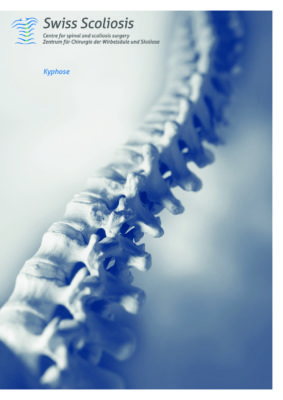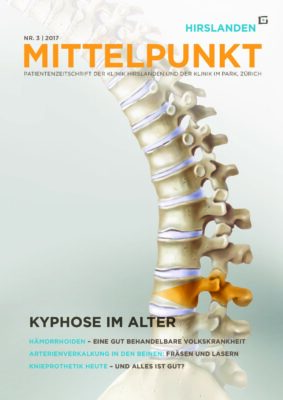Kyphosis
A kyphosis is a pathological forward curvature of the spine.
Kyphosis of the thoracic spine
The thoracic spine shows a natural physiological kyphosis of up to between 45° and 50°. A pathology can worsen this natural kyphosis.
In young people, the main cause for this is Morbus Scheuermann. In seniors, it is mostly caused by osteoporosis and traumatic vertebral fractures.
A worsened kyphosis of the thoracic spine leads to pain under physical strain.
Kyphosis of the lumbar spine
The lumbar spine shows a physiological lordosis between 50° and 60°. A pathological kyphosis of the lumbar region appears, if this natural curvature of the lumbar spine is diminished. In this case a real, pathological kyphosis is formed, depending on the degree of severity. This can be caused by:
- Attrition (degeneration) of the lumbar spine (kyphosis due to age)
- Osteoporosis
- Traumatic fractures
- Infections
- Rheumatological diseases (Morbus Bechterew)
- Instability due to previous surgery of the lumbar spine
- Malpositioned surgical stiffening of the lumbar spine (iatrogenic kyphosis)
Pathological kyphoses of the lumbar spine cause strong pain in both the lumbar region and the legs. To stand and walk upright, patients have to bow their legs continuously, leading to fatigue of the legs. In this case, the kyphosis causes a complex, clinical problem.
Treatment
A non-operative, conservative treatment is usually unpromising. The malpositioned spine has to be erected surgically. In an iatrogenic kyphosis, revision surgery has to be performed.


